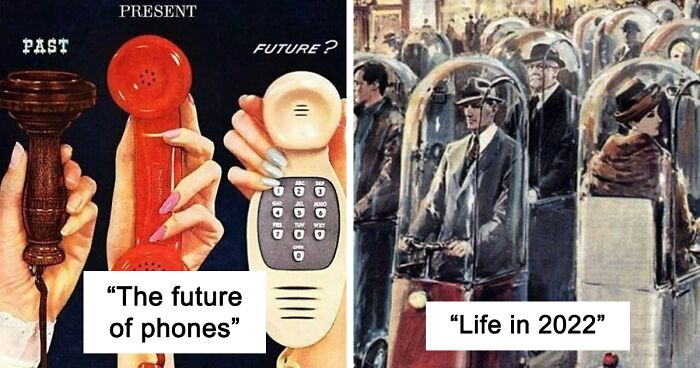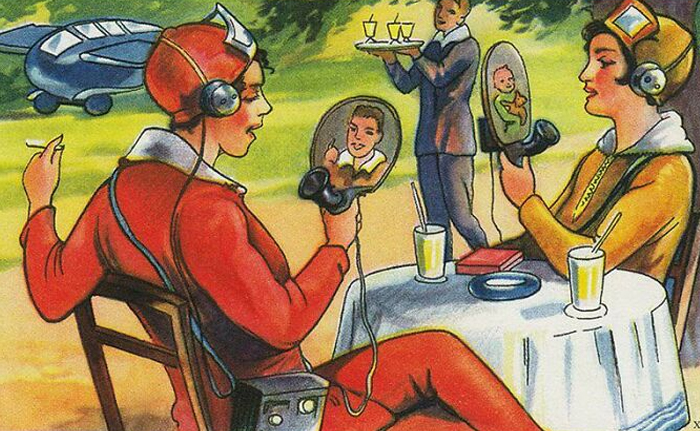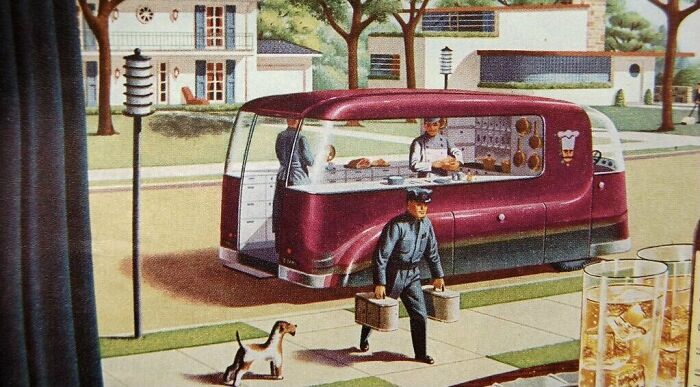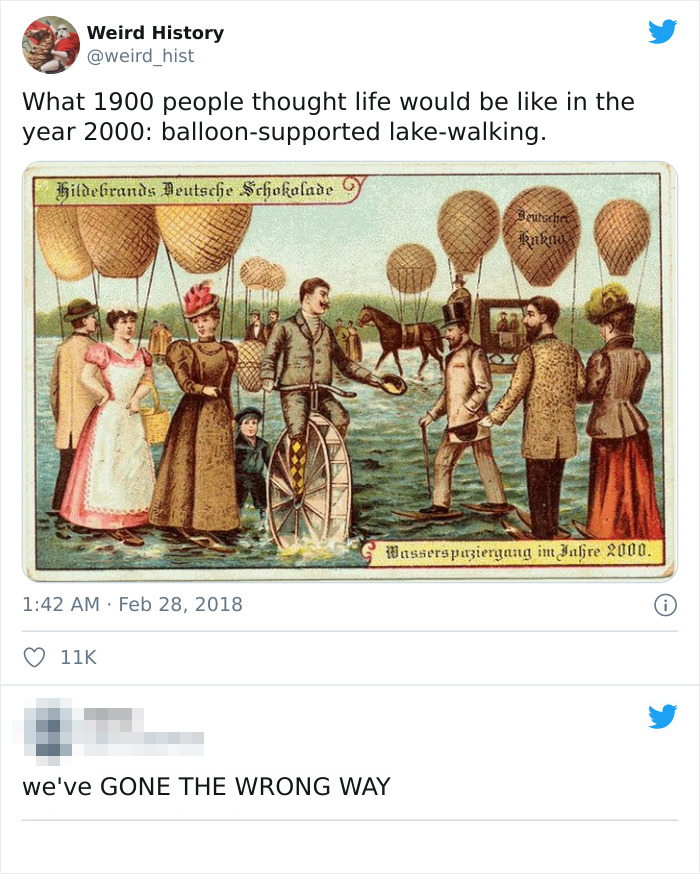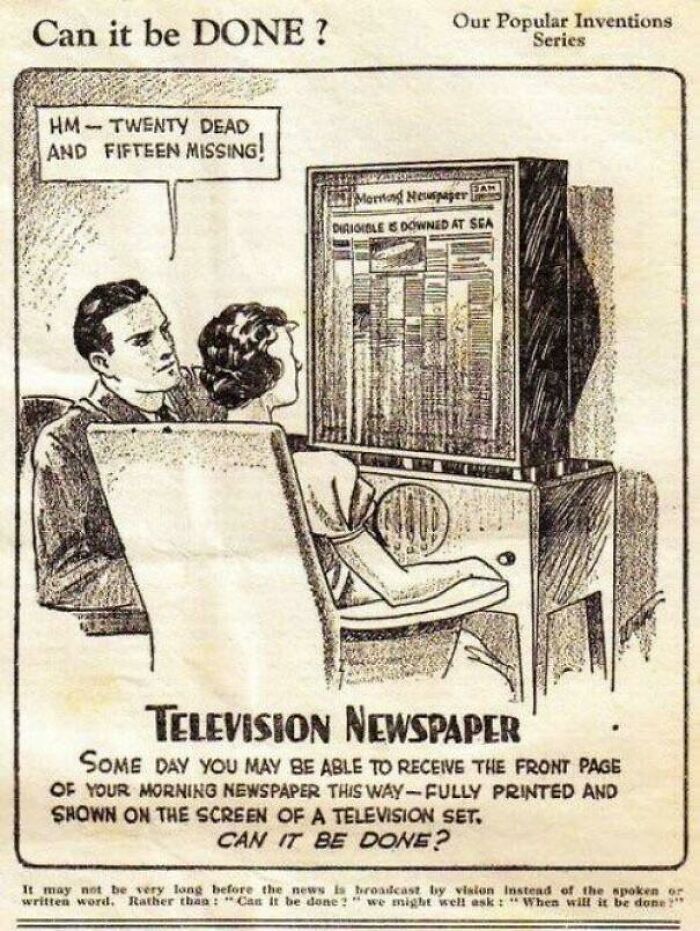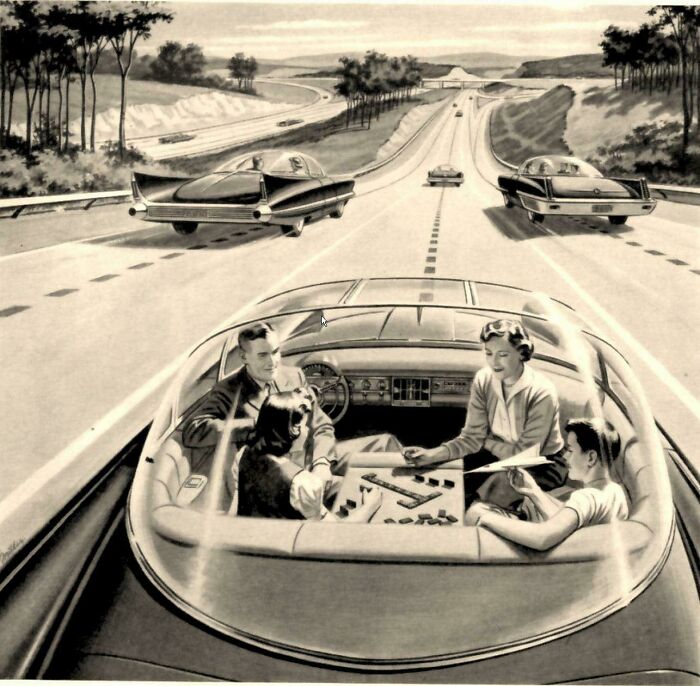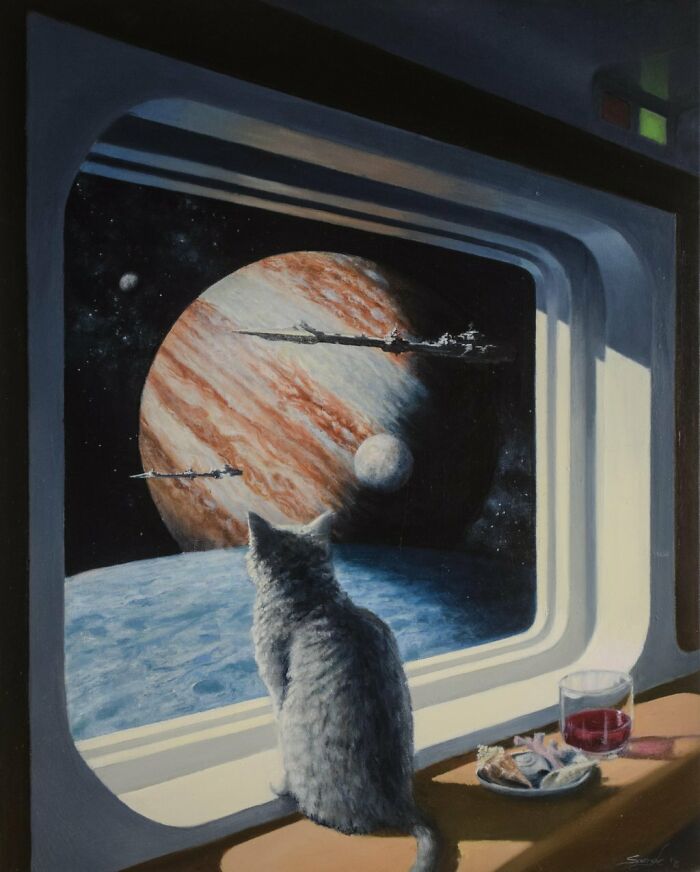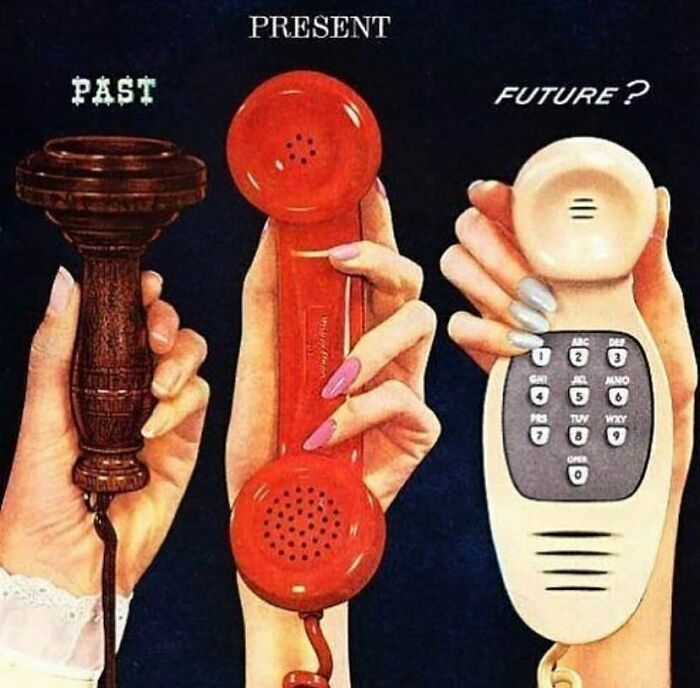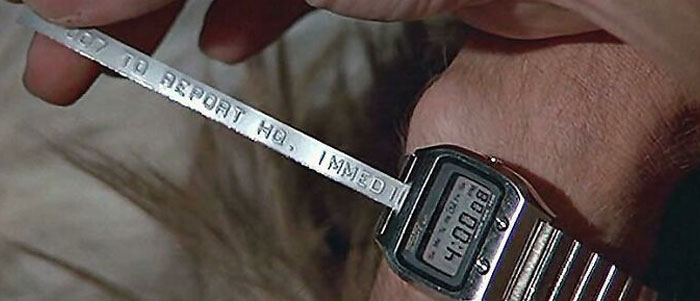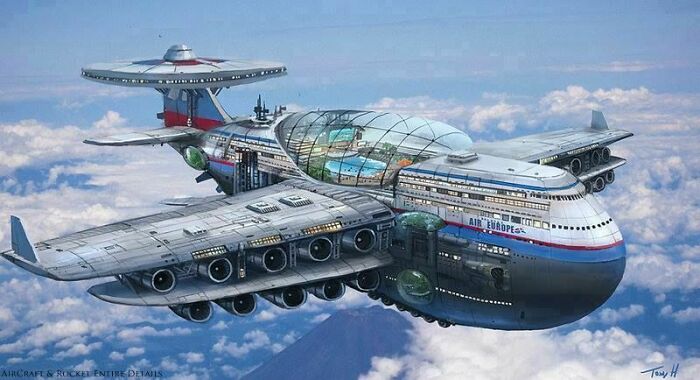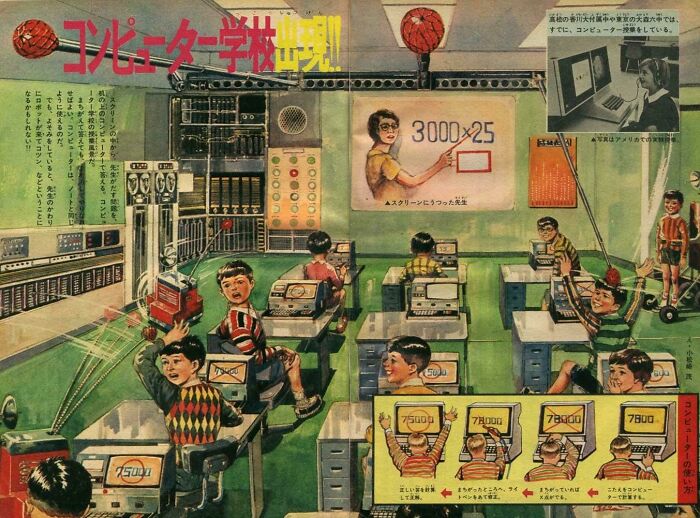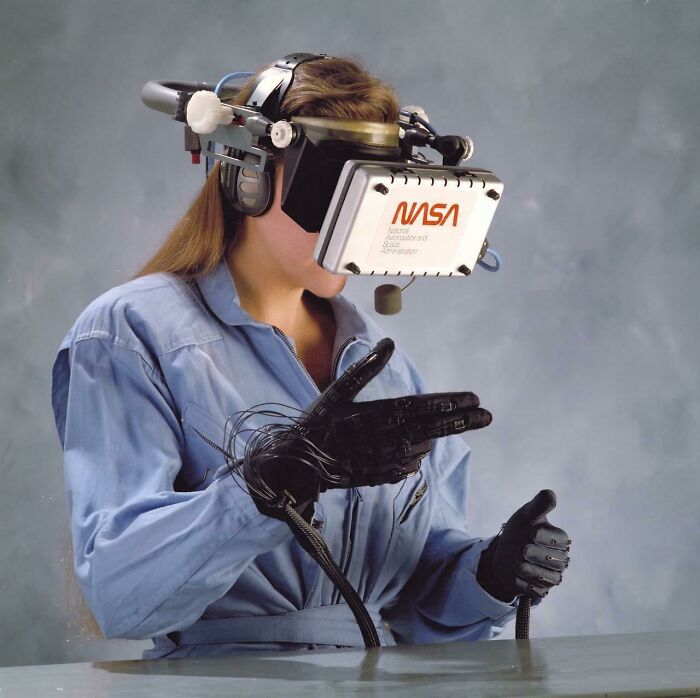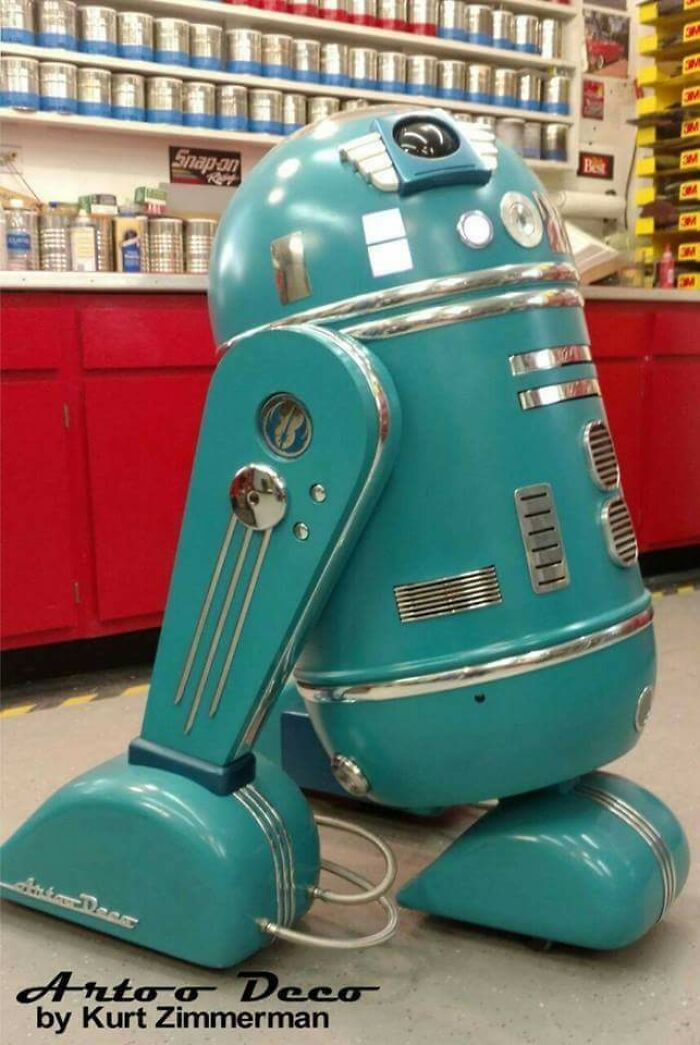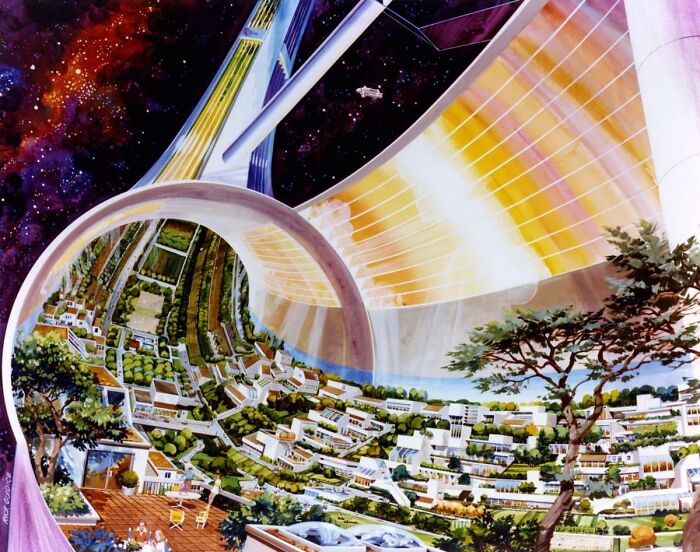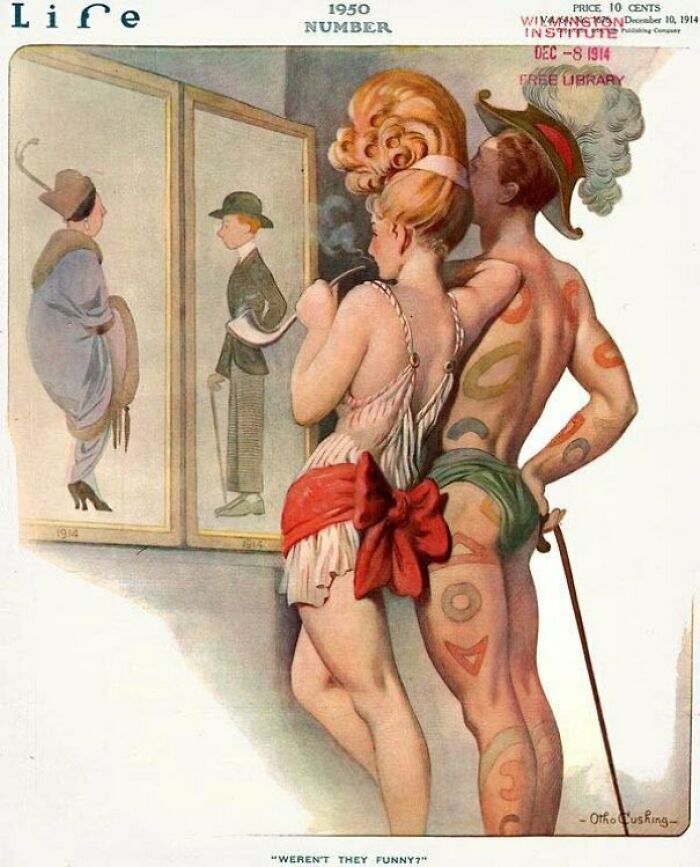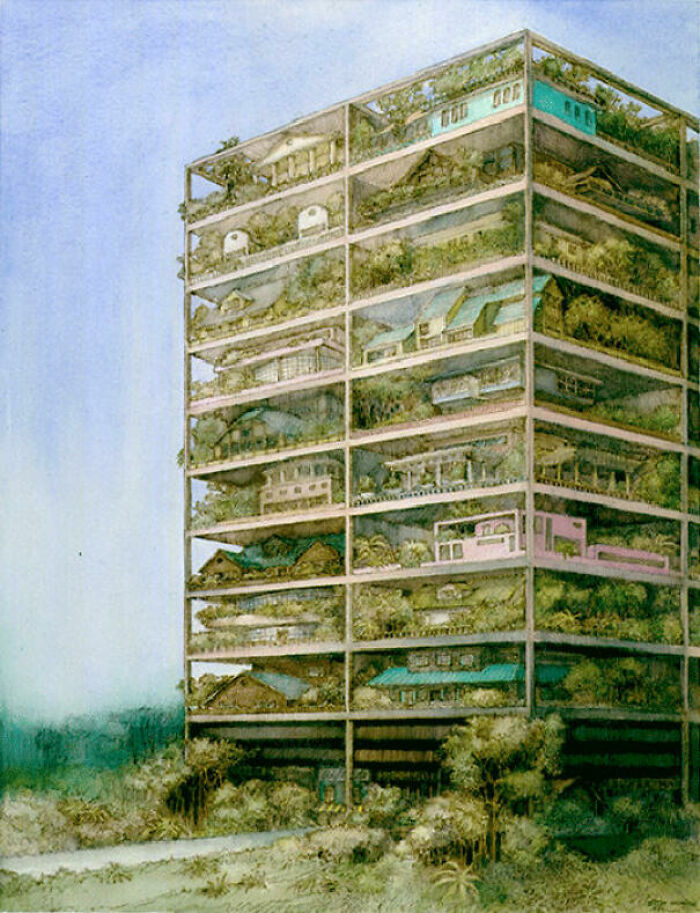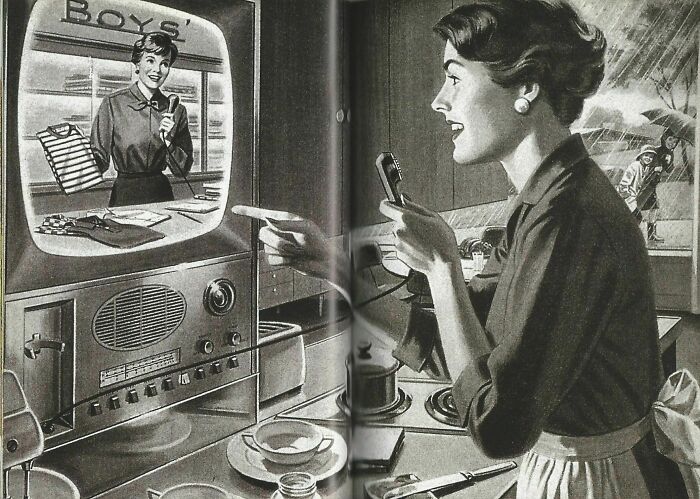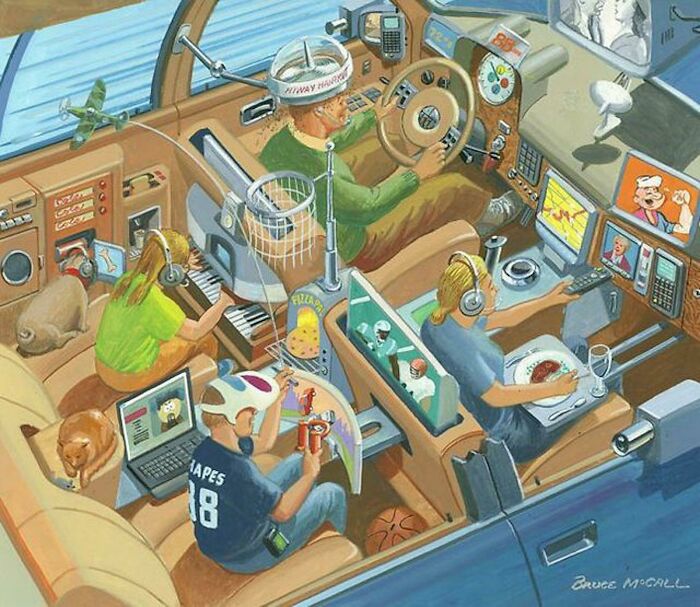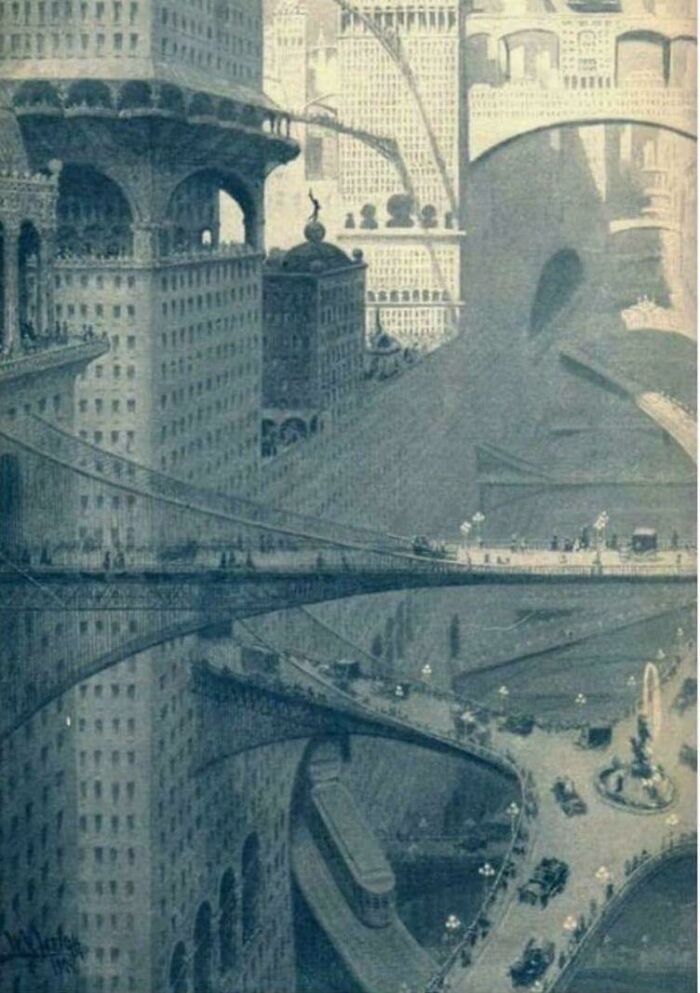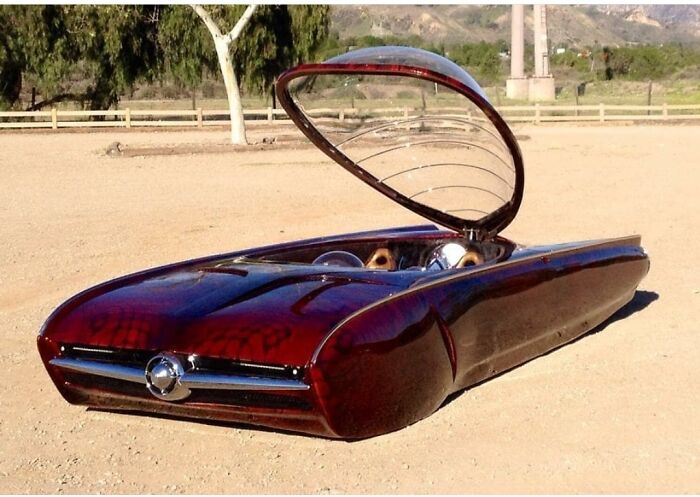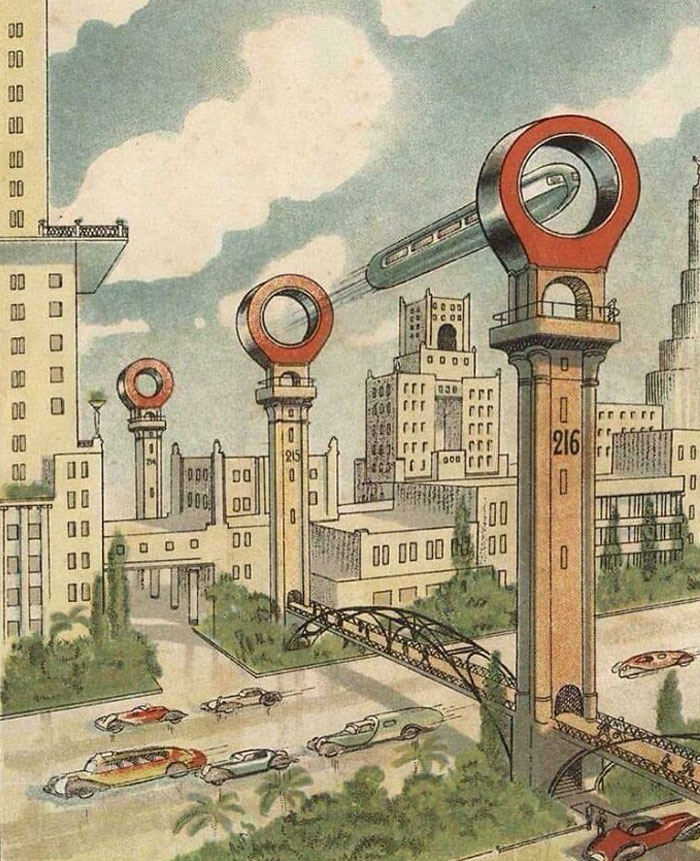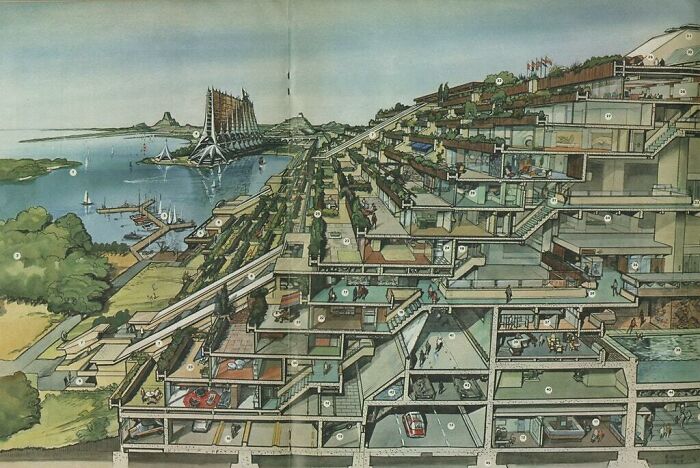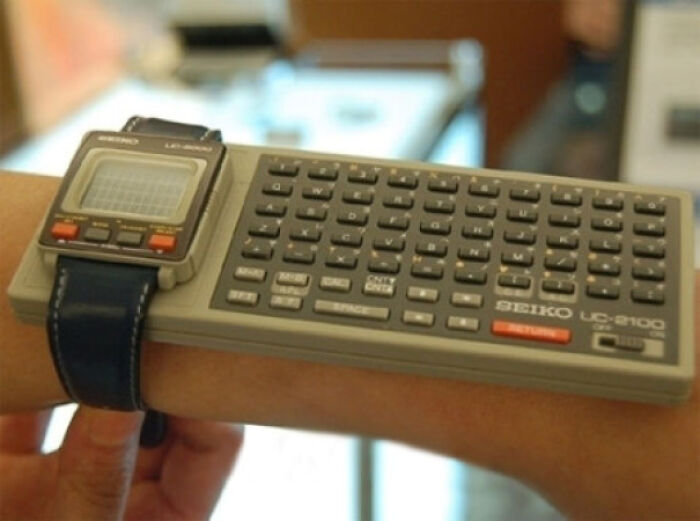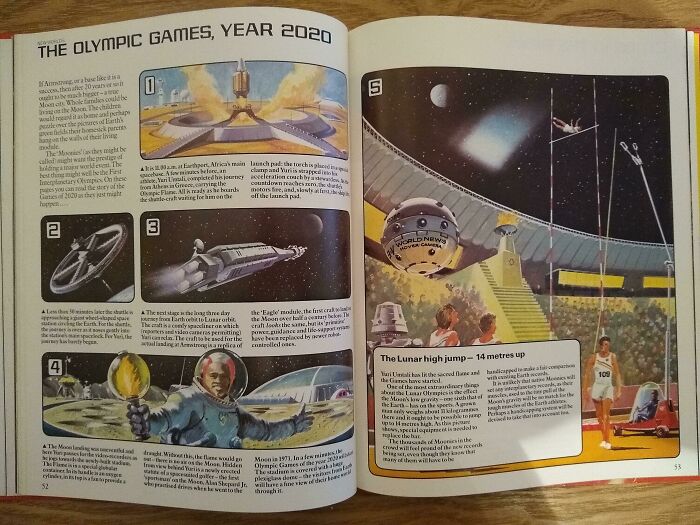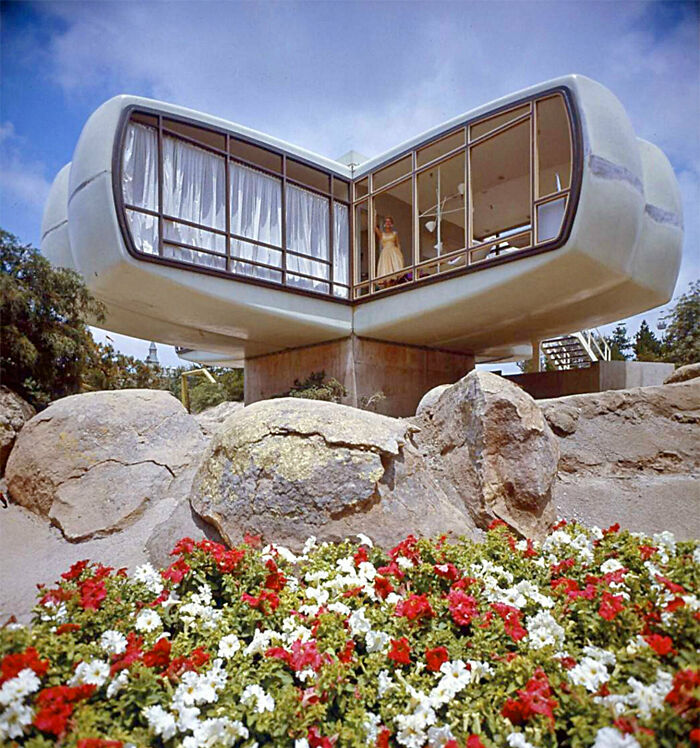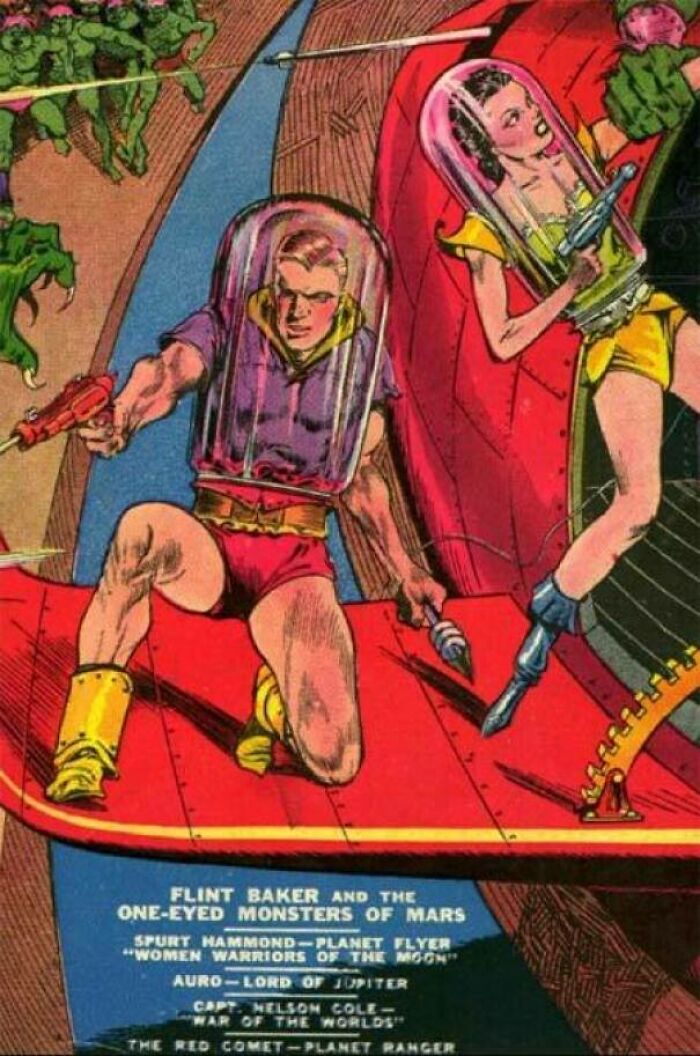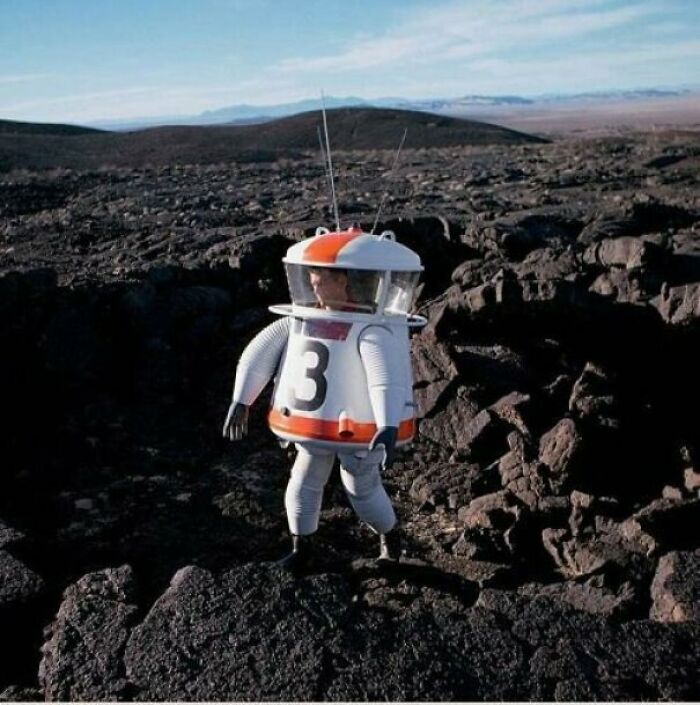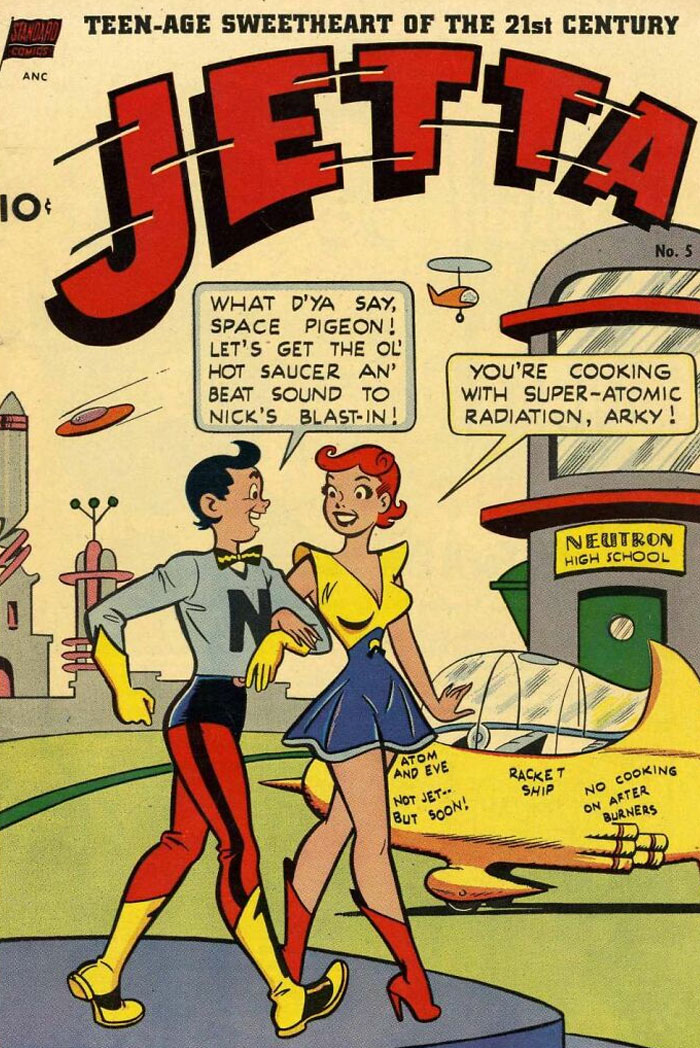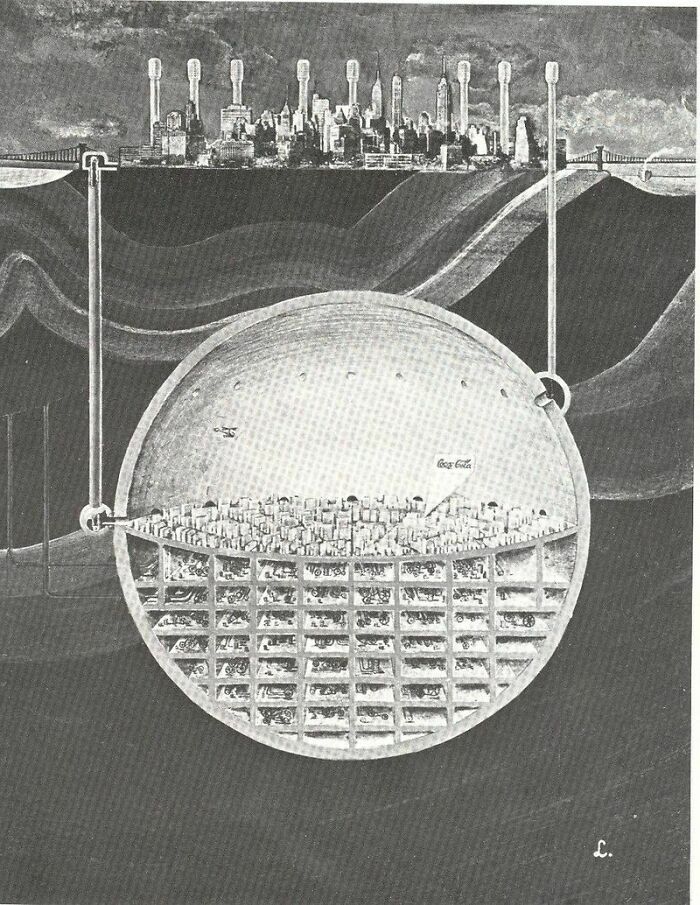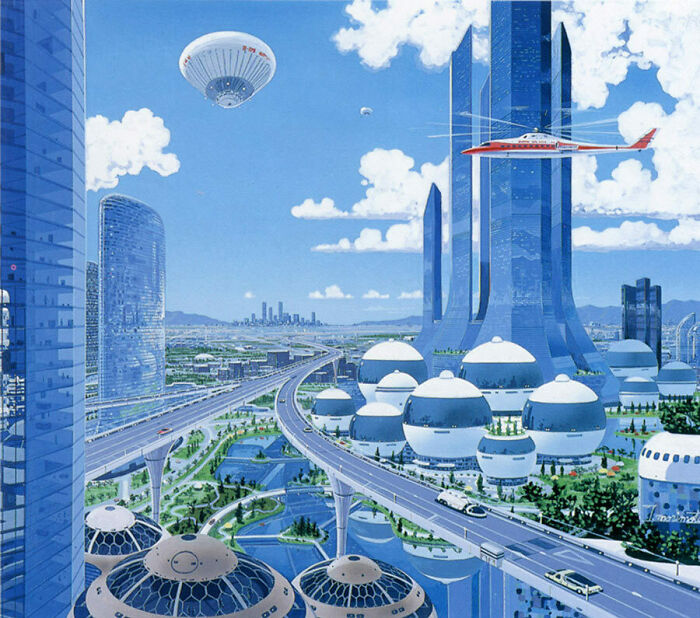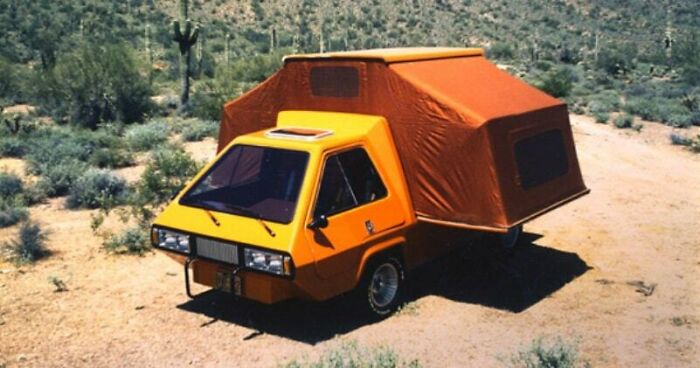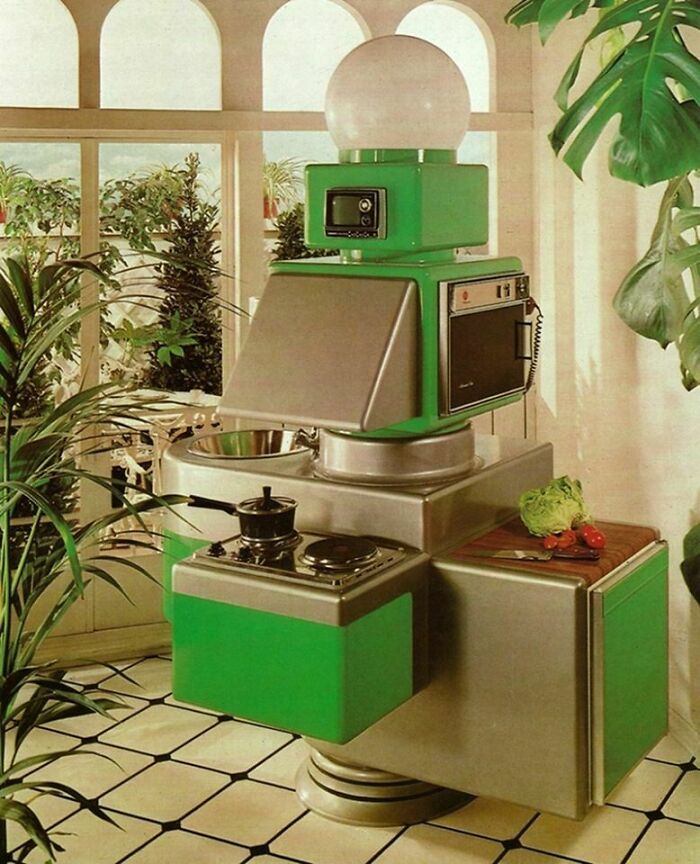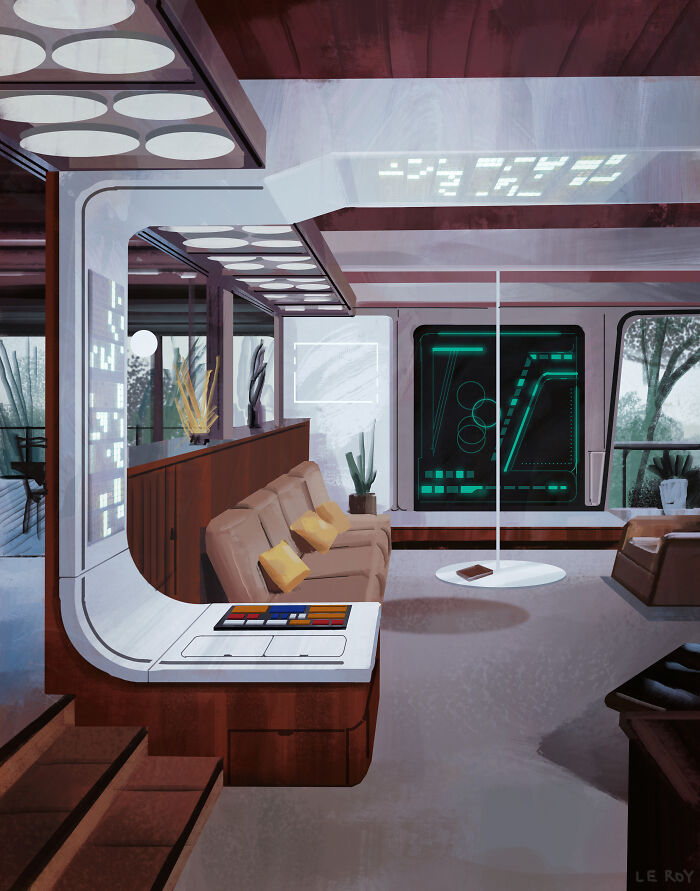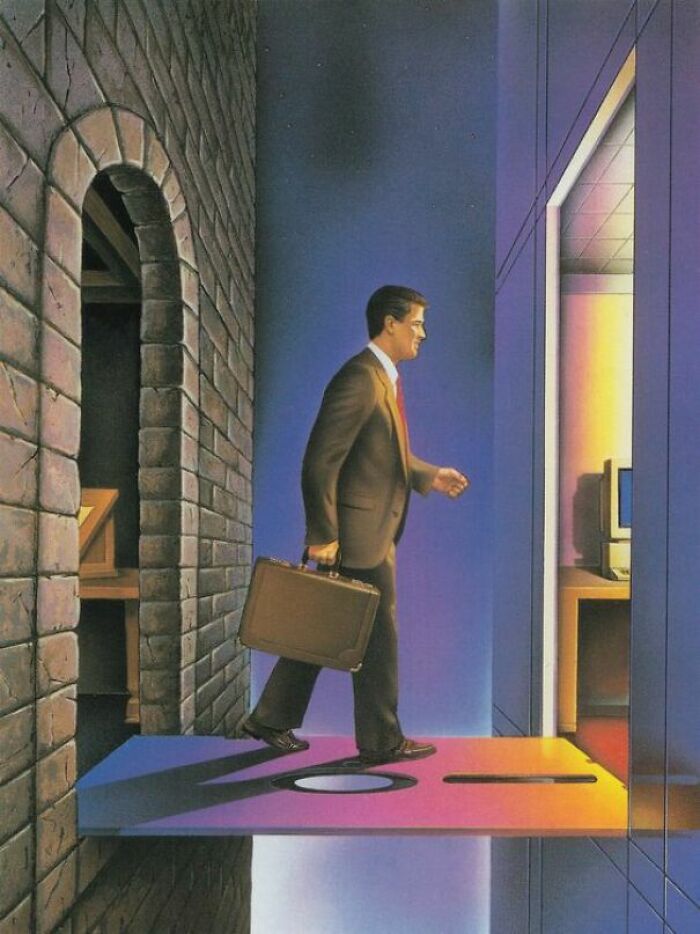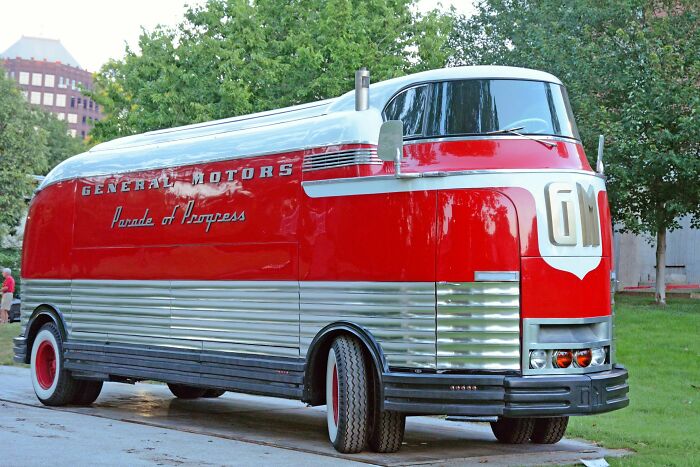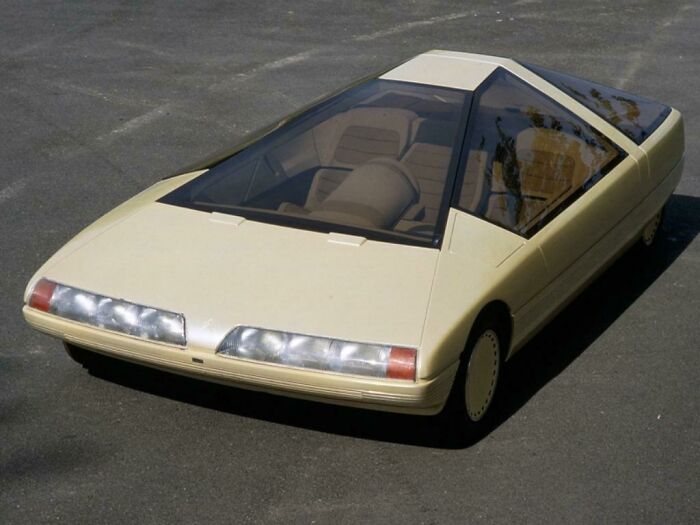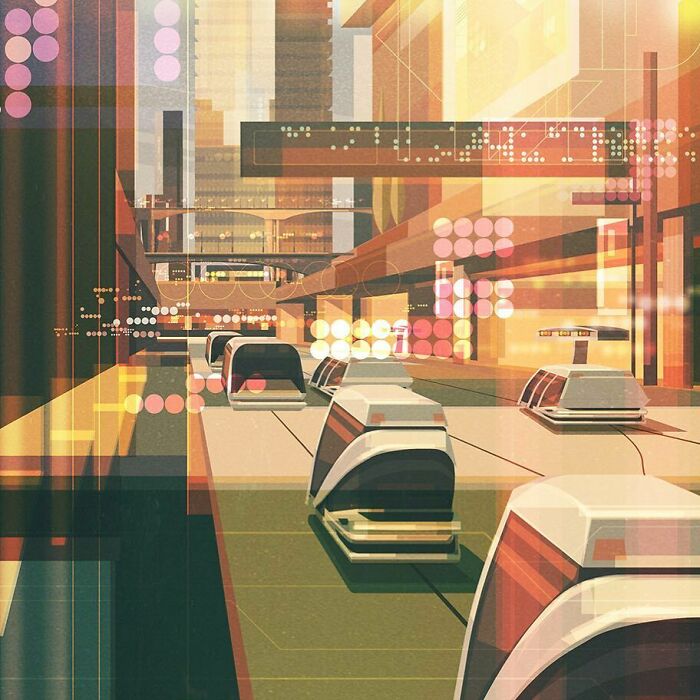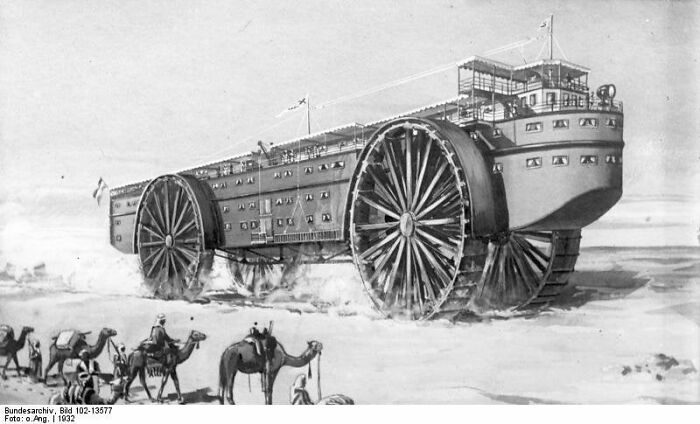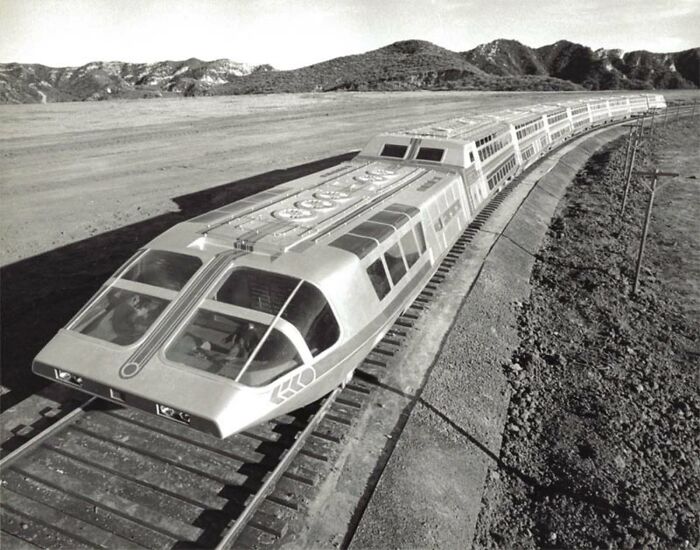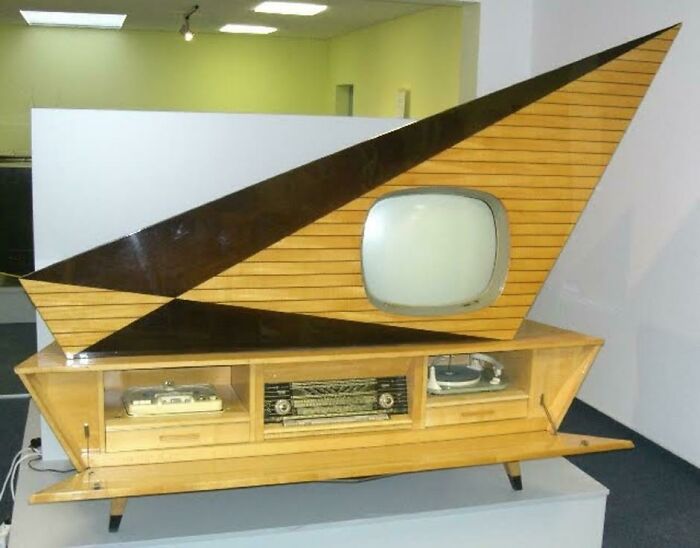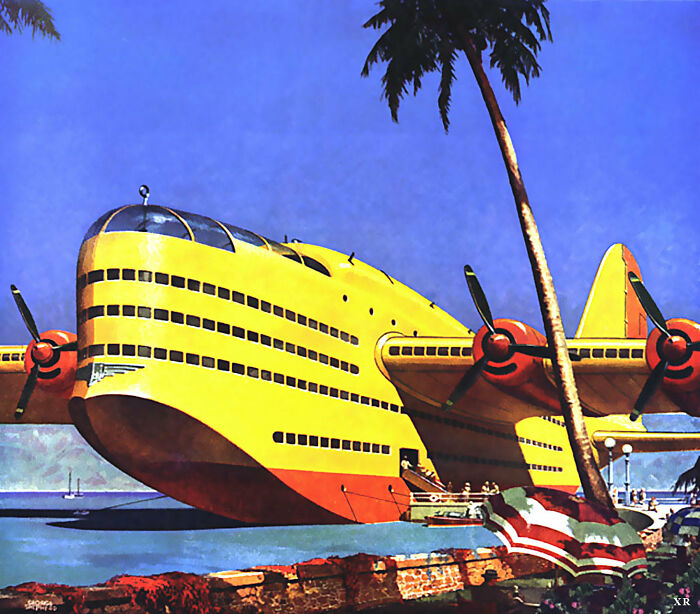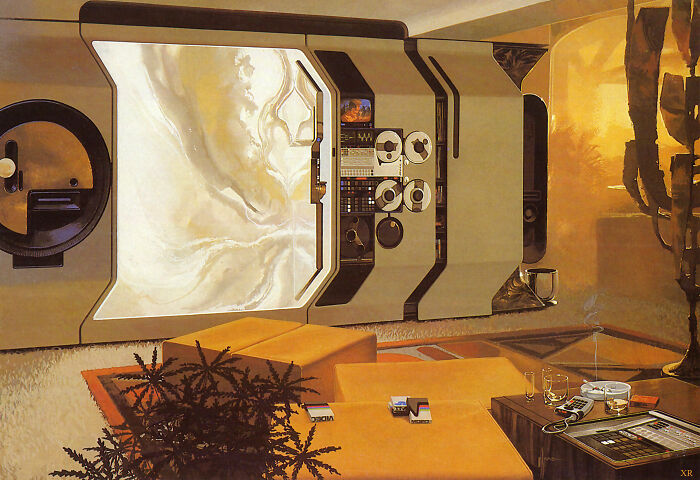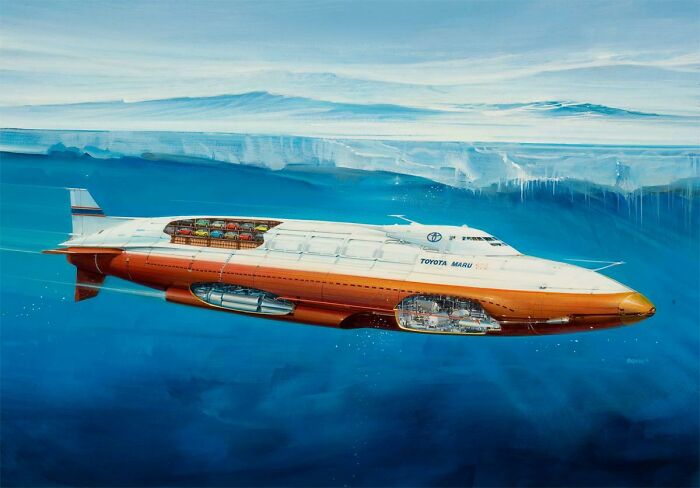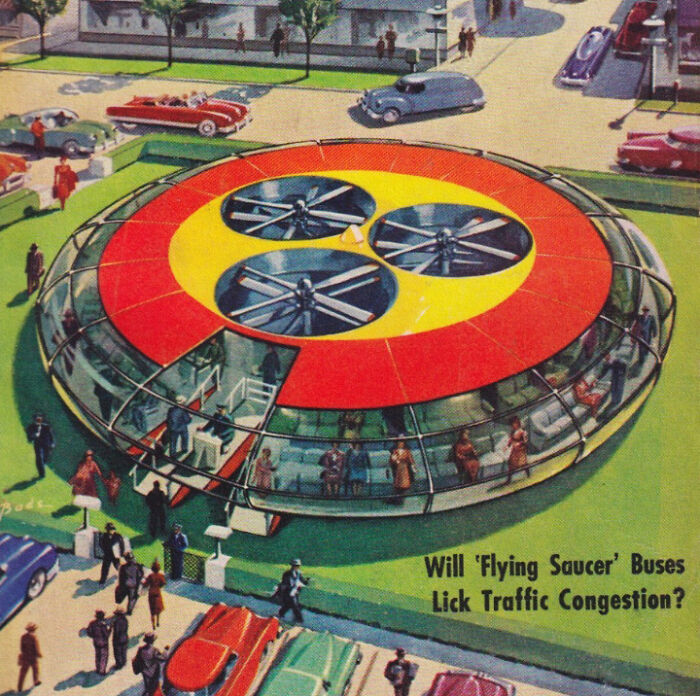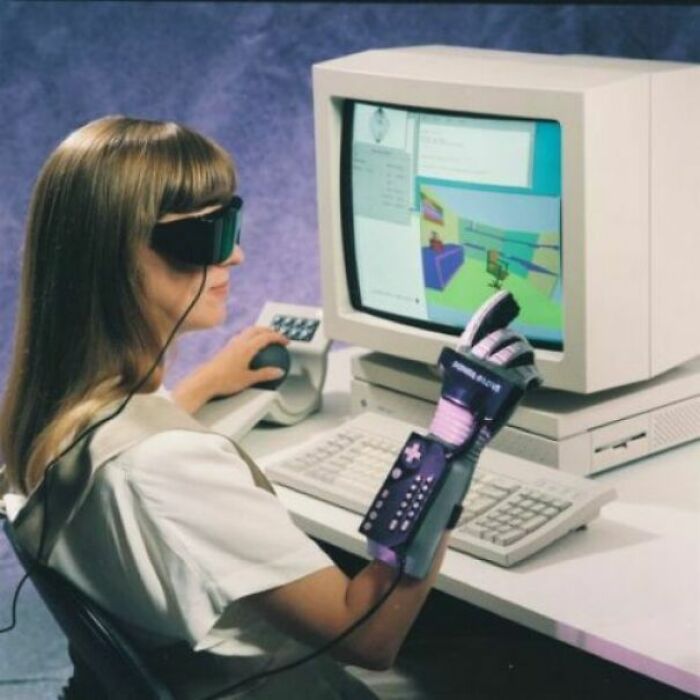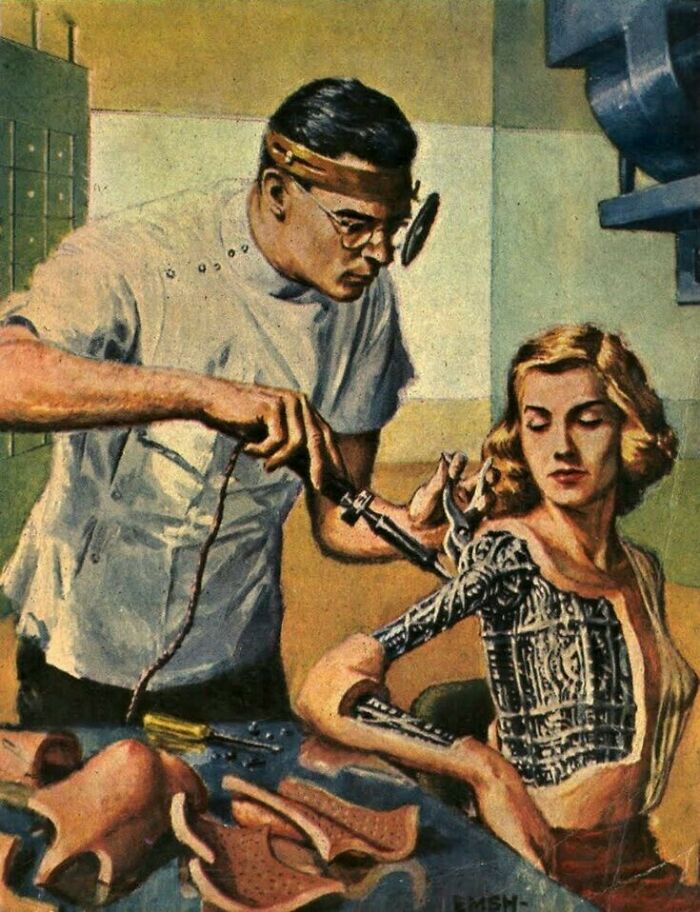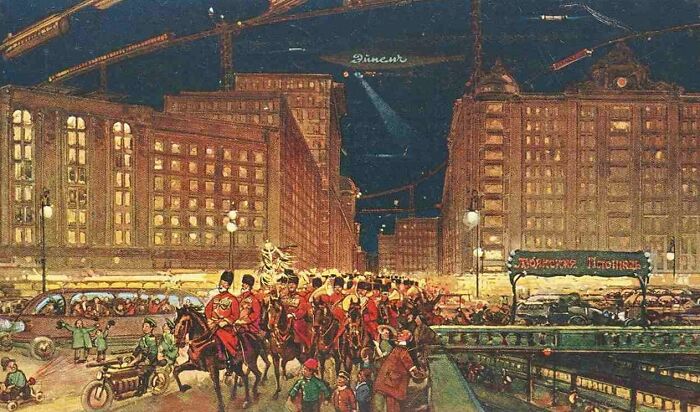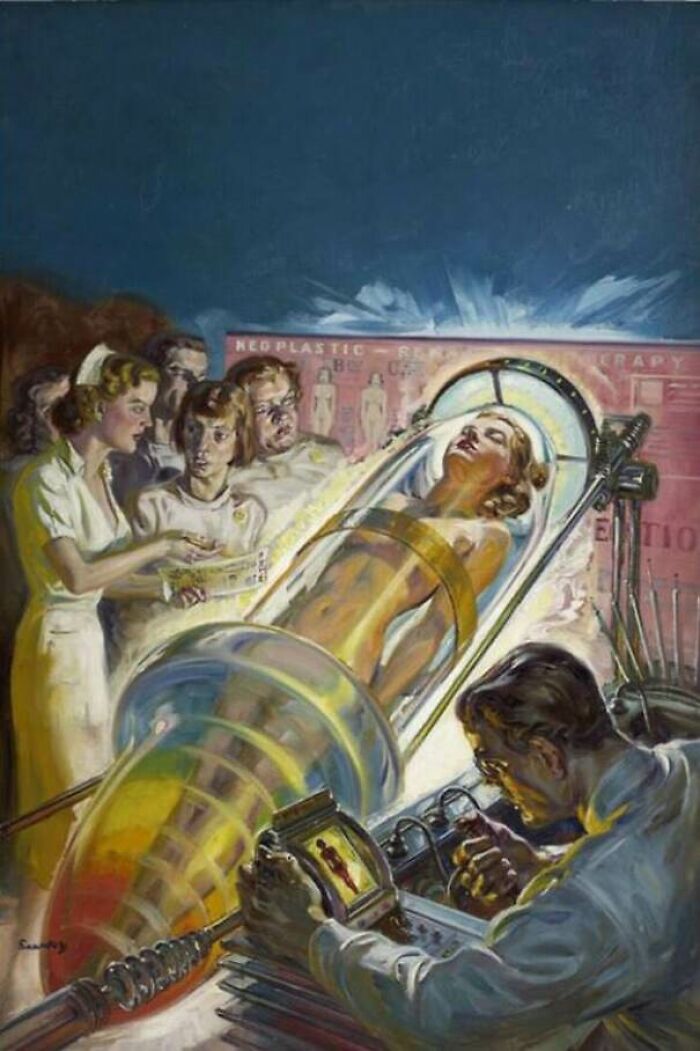It’s crazy to think both how short and infinitely long a century is. You see, Motorola’s DynaTAC, the first cell phone, was launched in 1984 for a price of $3,995. And today, nobody can imagine their life without touch-screen mobiles with integrated Leica cameras and AI face recognition systems that come at much less than Motorola’s initial price.
So imagine how differently people back then perceived the advancements in technology that looked both incredible and life-changing. And they were. But technology, and the world we live in, escalates so quickly that it surpasses our best forecasts for what the future holds.
And this time, we are talking a look at retro-futuristic examples created in the previous century that give us a glimpse into weird and wonderful dreams of the human mind.
This post may include affiliate links.
An Artists Depiction Of The Future, Painted In 1930
A Fifties Navigation System. Don't Know Who Imagined This But I Love It!
Actually, it's a ln image someone created in 2013 https://www.designcrowd.com/design/8798738
To find out more about the weird and wonderful retrofuturism movement, Bored Panda reached out to Lisa Yaszek, a Regents Professor of Science Fiction Studies at the Georgia Institute of Technology.
Lisa explained that when we talk about retrofuturist objects and images, we usually refer to images of the past from the late 1800s through the space race, like many of the images collected here. “And when we look at these images, it becomes clear that people from the past actually had expectations of the future that were often quite like our own!”
1940s Vision Of Food Delivery Future
According to Lisa, “they seem to have been particularly good at extrapolating from all the exciting new communications technologies of the time—telephones, radios, film, and TV—to imagine a range of new communications technologies much like we have now that allow us to talk to anyone from anywhere (#1 and 11), navigate our cars with ease (#2), get breaking news on our screens (#5), and even shop from home (#18 is shockingly on the mark).”
We Really Messed Up
Television Newspaper - Some Day You May Be Able To Receive The Front Page Of Your Morning Newspaper This Way
"Twenty dead and fifteen missing" ... not much has changed for front page news. Same doom and gloom on front page.
Self Driving Cars Of The Future, Circa 1960
Moreover, “People of the past were also quite good at anticipating how our clothing and personal presentation might change! Image #1 presents us with the kind of brightly colored, streamlined, unisex uniform first imagined by avant-garde artists and then made popular by science fiction filmmakers in the opening decades of the twentieth century and that are still very much with us today.”
As for image #16, Lisa sees it as an exciting representation of future fashion. “The two models here appear to be wearing then-contemporary undergarments, but other aspects of their styles are very modern! The artist certainly guessed correctly that in the future, we would wear less clothing in public, indulge in more body ornamentation (the man’s tattoos look a lot like the tribal body art that became popular with the Modern Primitive movement in the 1990s), and that gender roles might be less clearly defined.”
2022
'ship's Cat' By Keith Spangle
The Future Of Phones, 1956
Not even in the imagined picture is it possible to hold the phone comfortably.
Having said that, the people of the past were not always very accurate with their predictions about the use of big science and big engineering, said Lisa. “Images #15, 19, 20, 21, 22, 25, and 30 are particularly good examples of the utopian dream that someone—possibly the state, possibly a benevolent corporation—will engage in big, public engineering projects that will allow us to live well in the potentially hostile environments we might encounter in the future.”
James Bond Receives A "Text" Via His Smartwatch In The Spy Who Loved Me
But where would he keep the roll of tape the message is stamped onto?
1970s Futuristic Concept For Jetliner Air Travel
1969 Japanese Vision Of The Future Classroom, The Odd Part Is That Included Small Robots To Rap Students On The Head When Misbehaving
According to the professor, people also had surprisingly different ideas about transportation than we do now. “I get the sense that the women in image #1 have flown their personal airplanes to the restaurant for a quick drink, and I love the idea that we might create maglevs for mass transit and then use balloons and mechanized glass domes for personal travel (#4, 7). People were right to guess that we’d have automated cars (#6, 17), but they clearly didn’t anticipate that such cars would be used mostly for corporate purposes.”
“Finally, as a university professor, I am desperately sad that we have not developed robots to rap students on the head when they are misbehaving as in image #10. Someone needs to start working on that immediately,” the professor commented.
VR In 1989
Artoo Deco
How Nasa Imagined Life In Space
The professor of science fiction studies also noted that it’s important to remember that these futures were not retro to the people who imagined them. “They were modern imaginings of the future, inspired by the cutting-edge sciences and avant-garde arts of the time.”
From the retrofuturist images that were generated between the 1880s and 1960s, “we get a great sense of the sciences and technologies that were most important to people of the past, including new modes of mass and personal transportation, new communication technologies, and new habitats for new forms of living (garden mega-cities and artificial ringworlds),” Lisa explained.
Fashions Of 1950, As Predicted On The Cover Of Life Magazine In 1914
1981 Vision Of Suburbia After There's No More Room Left For Suburbs
I love the fact that everyone still has a garden and freestanding house instead of a balcony with no space.
Home Shopping In The 1940s
Lisa added that “people were inspired by the rise of modern cities and modern factories to imagine that we would enjoy many large, state- or corporate-sponsored public works projects—and that those projects would combine the best of the natural and technological worlds,” and added: “They are wholeheartedly utopian!”
Futuristic Road Trip With The Family (Bruce Mccall)
City Of The Future As Imagined In 1908
The Future We Were Promised
Meanwhile, Lina Survila, a global tech PR and chief editor at Abstract Stylist, also told Bored Panda that “artists had the perfect vision, and it seems they were very close to the ideas we see today.”
Moreover, “Retro futurist aesthetics have touched every possible art form there is. Fashion is no exception. When we think of futurism in fashion and a bright vision of what the future might be, we think of Paco Rabanne. The Spanish fashion designer was active in the '60s and totally disrupted the fashion scene with retrofuturistic designs and his ideas of how people would dress in the future (most likely, that future is now).”
Soviet Vision Of The Future In The 1930s
Futuristic Netherlands, Drawn In 1970
1984 Smart Watch
Retro ideas of how the future would look inspired many creators, artists, and thinkers, “from architect and designer Matti Suuronen (Futuro house created in the 1970s) to writer Isaac Asimov's book The Naked Sun.” Lina added that The Jetsons with their retrofuturistic flying cars also deserve a big shout-out in popularizing the movement’s aesthetics in popular culture.
The 2020 Olympics...not 100% Accurate
Monsanto House Of The Future 1957
Worst Space Suit Design Ever?
One thing I appreciate about this is both individuals are equally underdressed. Too often female characters get a bikini while male characters get practical coverage. But this guy forgot his pants too.
This Was An Actual Space Suit Grumman Aircraft Corp Tried To Sell Nasa In 1962
Teen-Agers Of The 21st Century
Nuke-Proof Underground City Below Manhattan, 1969 (Oscar Newman)
1980s Future City By Tatsushi Morimoto
1979 Phoenix Camper With In Built Pop Out "Tent"
This "Convenient" Kitchen From '74
Retro Futuristic Living Room I Painted
From The Paper Age To The Digital Age (Andy Zito ‘85)
Bus
Very Futuristic 1980 Citroën Karin Concept Car - Link To More Pics And Details In Comments
Illustrations By James Gilleard
1927 Concept For A "Desert Ship" (Wüstenschiff) By German Engineer Johann Christoph Bischoff
The Nuclear-Powered Bullet Train From The 1970's Series "Supertrain"
Kuba Komet, Futuristic Home Entertainment Center From West Germany, Late 50's
Due to its high price (close to us$10.000 in today's money), it was only manufactured between 1957-1962 and there are only about 10 of them.
We All Live In A Yellow Airplane
Cigarettes, Tape Reels, And Chrome. Enjoy Your Stay In This Retro 70's Luxe Suite
Self-Contained Future 'Jet Ship,' Berkey Acrylic
Those Zany 50's
Virtual Reality, 90's Perspective
Why... would you need the computer monitor if you’re wearing VR glasses..
Ed Emshwiller - A Female Android (1954)
Moscow In Xxiii Century. Lubianka. 1914
Sad to think that based on the date this happy utopia have probably been painted perhaps only weeks before few shots were fired in the streets of Sarajevo.
Woman In A Tube
It makes me sad that we went from thinking that the future would be amazing to now knowing that most likely the future is going to be poverty and unhealthy living conditions for most people.
The future could still be amazing - if we do the right things, starting now
Load More Replies...My prediction for the future- Katie Potasky is blocked from BP. Lets hope for all our sake that becomes reality.
It makes me sad that we went from thinking that the future would be amazing to now knowing that most likely the future is going to be poverty and unhealthy living conditions for most people.
The future could still be amazing - if we do the right things, starting now
Load More Replies...My prediction for the future- Katie Potasky is blocked from BP. Lets hope for all our sake that becomes reality.

 Dark Mode
Dark Mode 

 No fees, cancel anytime
No fees, cancel anytime 






